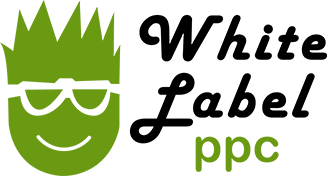With the upcoming election it’s nearly impossible to turn on the TV, read the paper, listen to the radio…or even drive down the street without being reminded of the upcoming presidential campaign. It seems the presidential candidates work tirelessly around the clock along with their staff and supporters to try and win votes from the American people.
Speaking to different groups and organizations, they use different strategies and tactics depending on who they are speaking to.
No matter whose side lines up with your values, you can’t deny that each side does an excellent job persuading people to see things from their point of view. Running a business is a lot like running a presidential campaign. You are tirelessly looking to win over prospects and get them to “vote” for you by buying your product or service. The problem is that as a small business owner, you only have so much time and a limited number of resources. There are no volunteers lining up offering to help you get more customers. Nor are there unlimited resources and people donating money to you so you can send out more advertising.
So what do you do?
Today I’ll give you five tips (and a bonus tip) on how to market your products and services and grow your revenue without having to hire a small army or sink tons of cash into a campaign:
Stay in front of your customers. A costly mistake many businesses make is giving up on prospects too soon. Remember no matter where you are in the buying cycle, your customers have to be sold to over and over again. Realize that no matter whatever it is you sell…chiropractor services, dentistry, insurance, financial services – everything has an incubation period. That means in order to win the business and truly convert a prospect to a buyer to a loyal customer, it’s your job to get in front of and stay in front of your prospect. Remember 80% of sales are made after the 5th contact, so never give up too soon.
One size does NOT fit all. Prospects and clients are not in the same place in the buying sequence. Some are just finding out about you whereas others may have bought from you multiple times. For better results and a bigger response, develop different sequences to address prospects and customers.
For example, let’s say someone is new to your product or service and is ready to try you out to make sure you are right for them, but are not ready to buy. Because this is a critical time, the role of your messaging here is to get your prospect to opt in to receive more messages from you. In contrast, someone who already purchased should receive a message that reinforces how valuable your product or service is and make them feel good about their purchase.
Create automated systems. Putting automated systems in place ensures you are regularly attracting and leading prospects to your product or service and engaging with them no matter where they are in the buying cycle. Create systems for every stage your prospect, client, customer or patient will go through. For example, you might send a sequence of three emails followed by a letter and a phone call when following up on a prospect.
You can create systems to:
- Attract new clients
- Follow-up on prospects
- Manage current customers
- Educate prospects and customers
- Assist customers in using your product or service
While this takes effort to set up in the beginning, in the end you save time by only having to create the system once (and occasionally updating it or refreshing it) and setting it on autopilot. Plus, having automated systems in place means you won’t have to continually have to chase after clients, customers or patients–nor will you lose sales because you didn’t have time or forgot to follow up with them.
Set up a multi-channel environment. The more different types of touch points in place, the higher your response will be. When setting up your email marketing, ensure your database can support multi-channel signals such as phone, email, mail and fax. For instance, if a prospect calls into customer service, it would be useful to have that automatically trigger an email to the customer asking if their problem was resolved. (Note, this becomes simple and a time-saving task when you do it up-front before a customer ever calls in.)
Don’t worry about having a perfect system. You don’t need the perfect system to get started. Put something in place, then tweak as you go. Don’t let perfect get in the way of done–because even an imperfect system will capture and convert more sales than one that doesn’t exist in the first place.
Use these five tips and you’ll not only grow your business more quickly, but you’ll never lose business because of being too busy to follow up. Put systems in place and you will find you spend less time trying to find customers and following up and more time cashing checks. Plus, by ensuring consistent contact with your prospects and customers, you’ll always have a steady flow of new business.
Here’s to your online success!
John Pfeiffer
P.S. And now for my bonus tip… If you are looking for a simple way to grow your business that makes it easy to put different multi-channel sequences in place so that a prospect or customer will never fall through the cracks I highly recommend Infusionsoft. This is the perfect system for marketers who want the power of a comprehensive turnkey system, but don’t want to deal with multiple vendors or spend hours making everything work together. I’ve recently changed over to Infusionsoft and am extremely pleased with how this is helping me automatically convert my leads into customers and growing my existing business without having to hire extra staff to do it.
If you’d like more info you can check them out here.

